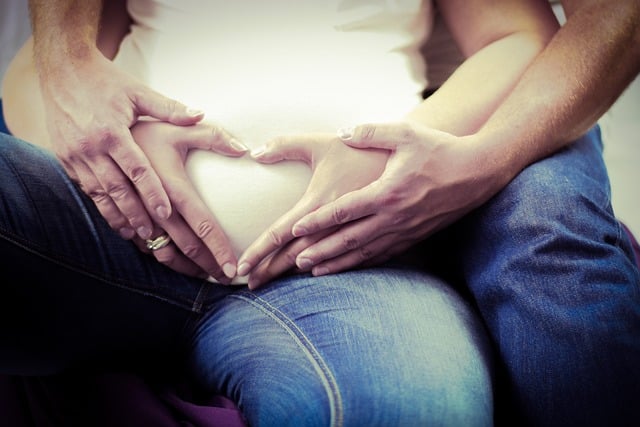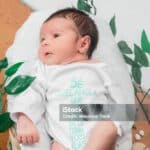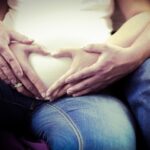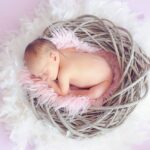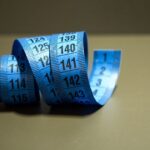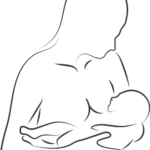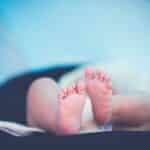Image credit to India Times
Everything You Need for Your Baby By the time your baby nears 6 months, you’re probably well aware that life with a more active baby is certainly different than living with a newborn. Get ready—your baby is about to become even more mobile.
Within the next three months, your baby is going to hit some pretty big milestones. That means they’ll learn to eat solid foods and sit up, wave, and babble. They might even crawl or stand when they’re nearing 9 months. So you can start taking steps to keep your curious baby safe and healthy.
There are plenty of products out there, so it’s easy to feel a little overwhelmed. Seriously, with all the options out there, it can be tough to know what you actually need versus what you can live without.
To help, we have put together a list of everything that you can do and buy for your 6- to 9-month-old baby. Being on top of things will make life easier for both of you!
Babyproofing
At this stage, your baby will go from sitting up to standing, so the most important thing you can be doing at this time is making sure that your home is safe. Injuries are one of the top killers of young children.
The amount of babyproofing gear you will really need will be determined by your house’s size and layout.
An easy way to get started, and to finish, is by getting down on all fours and crawling about to see how the landscape looks from that vantage point—from sharp corners to stray cords and exposed sockets and other dangers that are within a baby’s reach, low to the ground.
Here are items that will help make your baby’s life safer:
Baby gates: These are especially important at the top and bottom of stairs and in front of fireplaces.
Electrical outlet covers: The safest ones are those that cover the entire outlet.
Doorknob covers: These can be placed on doors to rooms that would be unsafe for your baby to enter.
Cabinet and drawer locks: It’s of paramount importance that all the cabinets containing cleaning supplies, drugs, alcohol, silverware, and other hazardous things remain locked tightly because inquisitive babies love opening doors.
Stove guards: These would be placed on top of your stove knobs to prevent your baby from mistakenly switching it on or even burning its face.
Appliance locking straps: These are going to keep the doors of your dishwasher, refrigerator, and other appliances closed.
Window gates or guards: This is good even on the first floor.
Corner covers: Look for foam or soft covers that you can stick down on any sharp edges and corners of furniture to prevent your baby from bumping into them.
Feeding Products
Your baby will probably start solid foods at about 6 months old after they’ve demonstrated all the signs of readiness. They’ll probably start reaching for finger foods and try feeding themselves around 9 months old.
You can either make your own baby food or buy premade foods; it’s totally up to you. If you don’t have the time or just don’t feel comfortable making your own baby food from scratch, that is perfectly OK. Look for minimally processed and low-preservative ingredients and organic brands. You can also investigate baby food meal delivery services.
Just keep in mind, that your baby will still need breastmilk or formula until their first birthday even though they’re eating solids. While they are starting to eat, though, you should offer them small amounts of water in a sippy cup.
Here is the list of products you’ll need:
High chair or upright baby seat: For safety, choose a high chair or upright baby seat with a three- or five-point harness, a crotch post so your baby can’t slide out of the seat, sturdy legs to prevent tipping, and a seat that helps baby maintain an upright position while eating.
4-5 bowls and serving dishes: To minimize the chance of your baby pitching a whole meal on the floor, look for dishes with suction cups underneath that stick to the table or high chair tray.
3-7 Baby spoons: Get ones that are small enough to fit your baby’s mouth, and without sharp sides. Softer spoons, like those made of silicone, will work better than metal ones when your baby learns to bite the spoon too.
3-5 bibs: As soon as your baby starts to feed themselves, things get messy so you may want to consider bibs that wipe clean or that have long sleeves.
A splash mat: No matter what you do, some food is going to end up on the floor but a splash mat can make things a little easier to clean up.
Baby food maker: This will steam, cook, mash, or puree food, although truthfully, you don’t really need to get some really fancy one. Some babies prefer finger foods or outgrow the baby mush pretty fast.
First foods: Whether you’re making your own or buying food, fresh fruits and vegetables—like berries, bananas, and avocados—can make great finger foods or snacks. As soon as your baby is a bit more comfortable with solids and puffs or Cheerios, they can help them work on their pincer grasp.
1-2 baby cookbooks: Yes, there are loads of options when it comes to cookbooks, but you most likely only need one or two at best.
Also Read : Measure for Baby Shoe Size, Step-by-Step
Clothing
With all of this movement, however, you’ll probably want to invest in some clothes that can hold up to some wear and tear. Here’s what you’ll want to get:
Tough everyday outfits: Look for clothes you won’t worry about getting dirty. Pants with double-knee pads are also a great choice.
Seasonal clothes: One needs coats and hats if one lives in a place where the winters are cold. For baby’s safety during the warmer season, sunglasses, rompers, and sun hats will come in handy.
Non-skid socks: Your baby doesn’t need shoes until they start walking, and it’s actually better for them to go barefoot or in socks when they first start pulling themselves up and cruising. But socks with non-skid soles definitely will come in very handy.
Swimsuit, Rash Guard, Swim Cap: Depending on the season, you may want to start getting your baby accustomed to swimming as well. This helps them become accustomed to the water. Just do not forget to throw in a rash guard with a swim cap when you plan on going out in the water. You won’t forget the swim diapers.
Pajamas: Footed PJs can be a good idea in the winter or if you live somewhere cold. Sleep sacks are still OK to use; and if you do rely on them, you’ll want to make sure that they don’t restrict your baby’s ability to use their arms or roll over in their sleep. As a result, some parents start making the switch to pajamas around this age.
Diapers: Babies will still be going through up to about 9 diapers a day at this age.
First Aid Supplies
Your baby’s first-aid kit is already pretty well-stocked with nasal aspirators, saline spray, diaper cream, petroleum jelly, and a thermometer. Now that your baby is 6 months or older, you can add some first-aid medications to it in case you might need them.
Always confirm with your baby’s healthcare provider before giving your baby medicine to be sure that you are giving the right dose. However, here are a few things you’ll likely want in your arsenal:
• Infant ibuprofen: Infant Advil and infant Motrin are safe for babies over 6 months provided that it is prescribed by your medical professional.
Infant acetaminophen: Always request dosage instructions from your healthcare provider on baby Tylenol. This should never be given under 12 weeks of age.
Baby gas drops: Simethicone is okay for babies if they have painful gas.
Antibiotic cream: Your baby may get more scrapes and cuts as they learn how to stand/walk.
Second-generation antihistamines: If your child has an allergic reaction, you may well be advised to administer an antihistamine. Most physicians prescribe second-generation antihistamines such as children’s Zyrtec or children’s Claritin. These are appropriate for children 2 and above. Note that physicians no longer recommend first-generation antihistamines like diphenhydramines, such as Benadryl, as a result of the side effects associated with the drugs in this class.
Cleaning Supplies
Six to 9-month-old babies can be really messy. Whether they’re dropping food on the floor, squishing it on their clothes, or rolling around on the ground, things get dirty quickly. Blowout diapers aren’t a thing of the past yet, either. So it’s good to get some baby-safe cleaning supplies, so you clean their clothes, highchair, and toys. Here’s a list:
High chair wipes
Sponges
Paper towels
Boogie/face wipes
Lots of laundry detergent
Hand wipes
Developmental Toys
Choosing toys for your baby can be a fun, yet overwhelming task because of the variety that’s available. The good news is, that some of the best developmental toys for this age group are actually simple ones that encourage your baby to explore their world, interact with it, and get moving.
Other popular choices are toys that encourage your baby to work on specific skills. Look for ones that get your little one crawling, standing, or walking.
Ultimately, it’s up to you how many toys you want to buy. But here are some popular recommendations:
Stacking blocks or cups
Tummy time mirrors
Crawling toys
Softballs
Activity centers or jumpers
Wooden bead mazes
Push toys
Sit-to-stand activity centers
Books They’ll Love
By 6 months, your baby can see in color and three dimensions, so they tend to be attracted by colorful and interactive books—those with touch-and-feel elements. They also respond when they’re talked to and begin to make some sounds in response. Thus, this is a really fun time to read with your baby.
By 9 months, your baby may say simple words like “ma” and “da,” and they may even try to imitate words that you say. Now is a good time to read books with pictures of everyday things your baby knows. For example, animals or food items should attract their attention in books.
Keep in mind, that babies put everything in their mouths at this age. As a result, it’s best to stick with board books because they can hold up better to wear-and-tear … and teething. You can also try fabric books.
Teething Supplies
This will happen at about six months, but in some babies it may happen a little earlier or later.5 And by 3 most children have all their baby teeth. So if you haven’t already now’s the time to stock up on everything you’ll need to help your baby through teething and look after those first teeth. Here’s what you’ll need:
Variety of teether types: The only way to know what type of teether your baby is going to like is by having a few different kinds, ranging from freezable to hard rings or silicone animals.
Age-appropriate toothbrush: A good routine with teeth hygiene very early on is important with your baby to prevent decay. Most toothbrushes will indicate on the packaging what age they are aimed at. Generally, you should start off with a rubber training toothbrush to clean the gums of the baby before the tooth erupts, and then switch to a bristle brush once it appears. Look for one with an extra small head and soft bristles.
